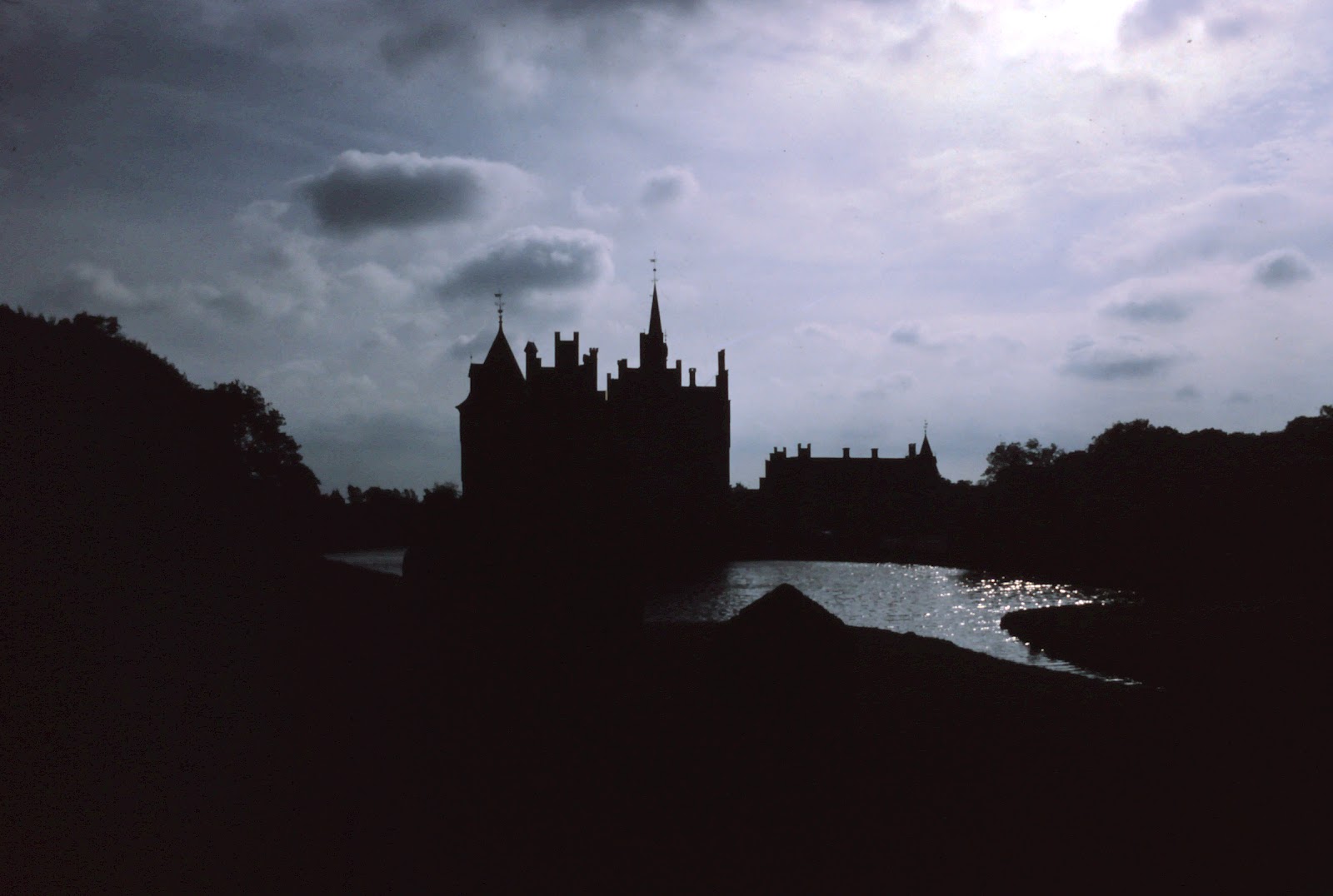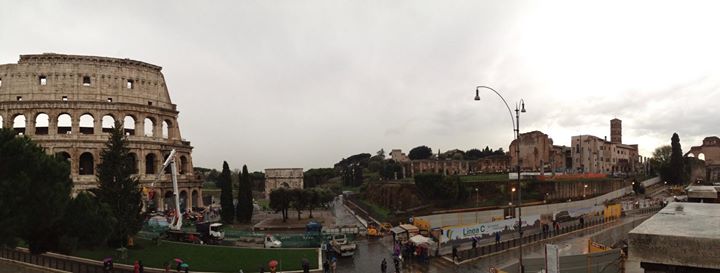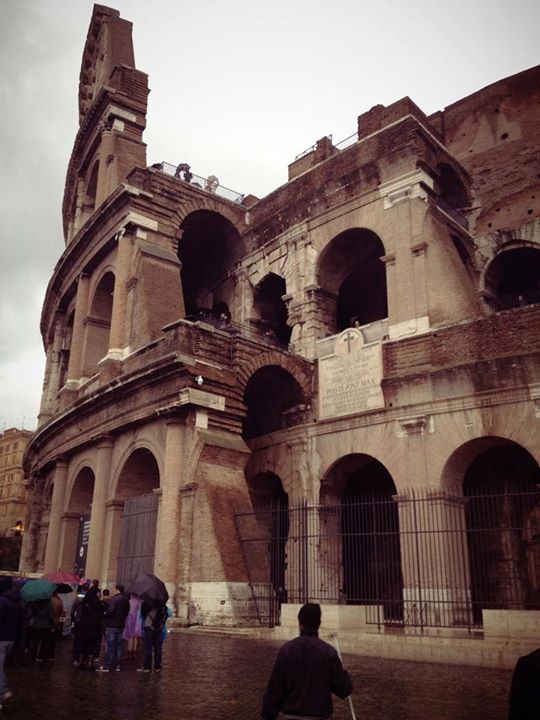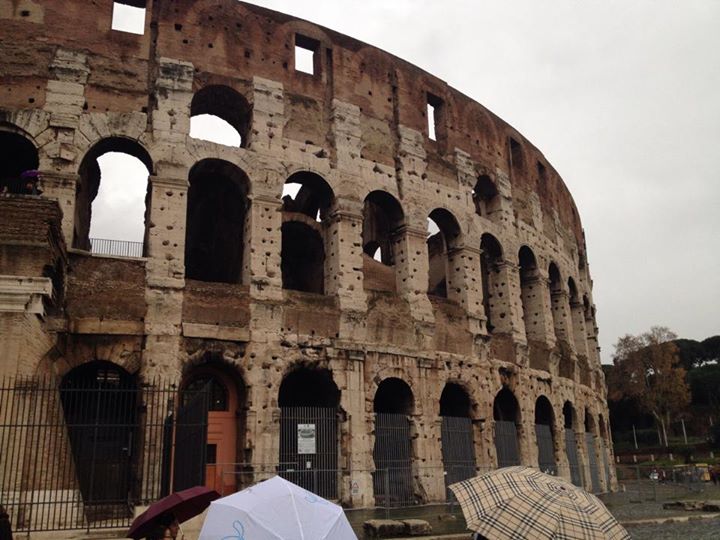#ArchiTalks 18: architecture and ... the bigger picture
#ArchiTalks 18
I live in the United States of America and as such you can choose to disagree with me and those are freedoms that you have now and hopefully you will always have.

As I have mentioned before, I grew up in a small one square mile borough of Pittsburgh, called Dormont. I went to school with a pretty much 95% white, Anglo population because the areas were still very much defined by culture and history at that time. However, the city of Pittsburgh is very diverse, in ethnicities and it was from a young age that I learned about these different cultures partly because the city had an “International Fair” every year and one could go and experience food and dance and traditional dress from the world over. The University of Pittsburgh has on the bottom floor of “The Cathedral of Learning”, the Nationality Rooms, where classrooms are decorated in the motif of countries, some that were not in existence when I was that age, because of the politics of the time.
When I moved to California, the demographics were much different and I never gave it any thought, I made a lot of friends in college and beyond and those friendships reflected that diversity. I married a man whose mother was from Nicaragua (she and her siblings were sent to this country by her parents because of the incoming regime) and whose dad was from Mason City, Iowa and where did they meet? In Los Angeles, of course..
So, we left on SAS and landed in Copenhagen, Denmark where we were shuttled to the Ny Carlsberg Glyptotek (yes, of the Carlsberg beer fame) and were “released” to danish families who were kind enough to take us in because otherwise, it would have been really expensive to live there. Then, the real adventure began. We went to class, we learned about Danish architecture, the public transportation system and the language, and we learned the metric system, we learned to love our Danish host families and call them “Min Danske Familie” and the biggest lesson:




I, like most architects have always been attracted to ruins. The archaeological proof that a society has existed and has either moved on (like the ruins of Chaco Canyon) or the ruins where buildings have decayed but the city has still moved forward (as in Rome or Athens), where the demise of a way of life in a particular time remains as a testament to what was done in the past, but not as a place to revisit because of a romantic notion of what it appears to have been. The facts are that Chaco Canyon was deserted for reasons that they still do not know but we can assume that it wasn’t because they wanted to leave their homeland. The Roman Coliseum was a place where gladiators were forced to fight to one’s death while the citizens and royalty watched and cheered. The Greek temples were places where sacrifices were performed, thought to be outside the temple, because they didn’t have scientific theories to provide evidence that doing so would not appease “the gods”. The neoclassical temple motif stands for a democratic government but today very few federal and state buildings are built with this style in mind. We have moved on to create an architecture that works more with the government and society in which we live today.
We try to break down the walls and preconceived ideas of what was done in the past and try to work with new ideas that represent the future needs of the client and who that client will be.
We as architects should try and at least look at world and national and local problems of housing for the homeless and displaced, deal with the new populations of people that may enter our country and be empathetic to and deal with these issues in our practices, not look back to a time that never really existed (I always say when people show up at hearings and say, "well, it has been this way for years... "well, let's bring back the bubonic plague, the architecture and fashion were so romantic then...) and try to remake the past.. We need to look to making a better world in the one that we live in.
architecture and… the bigger picture
| genekeyes.com FULLER dymaxion |
I got the prompt this month and it’s true as Bob says, “Plenty of room for interpretation on this one”, and it is true, there definately is, This might be a better way to convey an idea that might be more universal to people’s “school of thought” and maybe will speak to some people about the world in which we live and the future world in which we want to live and quite frankly,
my interpretation of that world and
“the bigger picture”.
| geology.com world/the united states of america map |
As I have mentioned before, I grew up in a small one square mile borough of Pittsburgh, called Dormont. I went to school with a pretty much 95% white, Anglo population because the areas were still very much defined by culture and history at that time. However, the city of Pittsburgh is very diverse, in ethnicities and it was from a young age that I learned about these different cultures partly because the city had an “International Fair” every year and one could go and experience food and dance and traditional dress from the world over. The University of Pittsburgh has on the bottom floor of “The Cathedral of Learning”, the Nationality Rooms, where classrooms are decorated in the motif of countries, some that were not in existence when I was that age, because of the politics of the time.
| geology.com map of california cities |
| worldatlas.com countrys europe |
When I decided to study abroad, I chose the Copenhagen, Denmark (DIS) program because of it’s focus on “Social Housing”, because it was (and still is), in effect, a Socialist country and we would be student residents of that country and would be covered under that system, including the medical system. Before we left, all of the students who were going to be studying abroad had to meet for an orientation. It was 1986 and we were told some pretty general things about being a “foreign student” in another country and some more specific ones, “Do not to say you are Americans, (it was better for people to think we were Canadians), do not display the American flag, and do not talk about politics with people, (one can google to get any of these political facts). Of course, back in the day, it was pretty easy to tell where you were from, because if you opened your mouth, it was about 10 decibels louder than anyone else and in “American”, not English, and the only people louder than Americans, are Australians, but nobody can hate an Australian, especially when they are supporting your economy contributing heavily to the luxury taxes. I know this because of the Australians we went to school with and I am still friends with them today!
| fao.org figis servlet |
We learned what it was to be an American in Denmark, yes, of course, “ja, selvolgelig”!
We learned what it was like to be a foreigner in another country.
We learned that we are part of a bigger picture and the picture of “US” isn’t always the one that you want to put as your profile pic.
 |
| 1987, today the pergamon museum, berlin |
When we traveled to other countries, we could speak English, but we weren’t always understood. When we went on a study tour travelling to East/West Berlin on an East German train that had the doors locked between our cars and the rest of the train, we learned what it was like to be separated from others because of where we were from. The East German soldiers that were travelliing in the next car broke open the doors and let us try on their military uniforms and we took photos and they shared cigarettes with us (how can you say no to a cigarette that someone was taking a risk for?).
 |
| ruins on a greek island, poros |
On a trip back from Greece, one of my friends decided that it would be a great idea to travel through what is now Yugoslavia to Austria. On a train, through war-torn areas with people who brought their animals onto the train with them. It was about 45C and I was not wearing an overcoat and scarf like most of the women on the train were and a short sleeves under a sundress was apparently not in the dress code. and while my travel partner’s “this is a no smoking car!!!” went unheeded. one phrase the men in our car seemed to know in English was “would you like to get coffee?”. Of which I replied, “No, thank-you!” (Anyone who knows me and coffee knows I must have been really out of my comfort zone to say no to coffee) We got to Vienna and I told my friend, “You owe me” and now that he is one of the Senior partners at a bigger San Diego architecture firm, I am thinking about calling that favor in…
| alicante, spain |
Last year, my daughter went to Alicante, Spain to study abroad and I went and met her there for a brief stay in Spain and then on to Denmark to visit the family I had not seen since I had left in June of 1987. We had found each other on Facebook and so we had asked them if we could meet with them and they very kindly said that we could stay with them. It was a good trip, there were differences of course, travelling in Europe now versus travelling many years ago, I only showed my passport once, we only took the train when we were in Denmark, because of limited time, we took a flight from Alicante to Copenhagen, via Berlin, of course I was still pulled out of line because I knew enough German to follow most of the orders until I got to “Take your laptop out of your bag and is this your laptop?” I think people who appear to be German and speak a little of it are their biggest problems! But there was no wall, the city of Berlin is very different from the Berlin that I had seen before the wall came down.
| the elephant bar, copenhagen, denmark |
In Denmark, I took my daughter to have a drink at the bar downstairs from where our architecture studios were long ago and still remain there today. She experienced living abroad in a very different time than I had, but she learned the same lessons of living in a foreign place, just was more in contact with me than I ever was with my parents because of the advent of computer and smartphone technology and the internet. And she was not told that she couldn’t say she was an American or talk politics. Decades ago, one could tell the origin of a person by what they were wearing or what backpack they carried, today it is difficult to know where a person is from until they tell you.
So where does architecture come into play in all of this? Besides seeing the buildings that I had only seen in architectural history books prior to experiencing them in person?
| all colliseum photos by kelley o'leary |
We try to break down the walls and preconceived ideas of what was done in the past and try to work with new ideas that represent the future needs of the client and who that client will be.
We as architects should try and at least look at world and national and local problems of housing for the homeless and displaced, deal with the new populations of people that may enter our country and be empathetic to and deal with these issues in our practices, not look back to a time that never really existed (I always say when people show up at hearings and say, "well, it has been this way for years... "well, let's bring back the bubonic plague, the architecture and fashion were so romantic then...) and try to remake the past.. We need to look to making a better world in the one that we live in.
Let us look at
architecture and … the bigger picture.
If you would like to read what other architects have in their room for interpretation of “architecture and…”, please follow the links below...
Please contact me via my website below for more information on the firm and sponsorship of the blog and podcast.
| Enoch Sears - Business of Architecture (@businessofarch) |
| Bob Borson - Life of An Architect (@bobborson) |
| Matthew Stanfield - FiELD9: architecture (@FiELD9arch) |
| Marica McKeel - Studio MM (@ArchitectMM) Architecture and Photography |
| Jeff Echols - Architect Of The Internet (@Jeff_Echols) Architecture and a Future Without Architects |
| Lee Calisti, AIA - Think Architect (@LeeCalisti) architecture and __ |
| Mark R. LePage - Entrepreneur Architect (@EntreArchitect) |
| Evan Troxel - Archispeak Podcast / TRXL (@etroxel) |
| Lora Teagarden - L² Design, LLC (@L2DesignLLC) Architecture and Travel |
| Collier Ward - One More Story (@BuildingContent) Architecture and Storytelling |
| Cormac Phalen - Cormac Phalen (@archy_type) |
| Nicholas Renard - dig Architecture (@dig-arch) |
| Andrew Hawkins, AIA - Hawkins Architecture, Inc. (@hawkinsarch) |
| Jeremiah Russell, AIA - ROGUE Architecture (@rogue_architect) architecture and integrity |
| Jes Stafford - MODwelling (@modarchitect) Architecture and Gaming |
| Cindy Black - Rick & Cindy Black Architects (*) |
| Eric T. Faulkner - Rock Talk (@wishingrockhome) architecture and m&ms |
| Rosa Sheng - EquitybyDesign [EQxD] (@EquityxDesign) Architecture And the Era of Connection |
| Michele Grace Hottel - Michele Grace Hottel, Architect (@mghottel) #ArchiTalks 18: architecture and... the bigger picture |
| Meghana Joshi - IRA Consultants, LLC (@MeghanaIRA) Architalks 18: Architecture and Mathematics |
| Amy Kalar - ArchiMom (@AmyKalar) Architalks 18: Architecture and ... Parenting |
| Michael Riscica - Young Architect (@YoungArchitxPDX) Architecture and Yoga |
| Stephen Ramos - BUILDINGS ARE COOL (@sramos_BAC) |
| brady ernst - Soapbox Architect (@bradyernstAIA) Architecture and Ego |
| Brian Paletz - The Emerging Architect (@bpaletz) |
| Michael LaValley - Evolving Architect (@archivalley) Architecture and Ego / The Architect's Unique Struggle with 'Good' Design |
| Jonathan Brown - Proto-Architecture (@mondo_tiki_man) |
| Eric Wittman - intern[life] (@rico_w) |
| Sharon George - Architecture By George (@sharonraigeorge) Architecture and Kids |
| Brinn Miracle - Architangent (@simplybrinn) |
| David Molinaro - Relax2dmax (@relax2dmax) |
| Emily Grandstaff-Rice - Emily Grandstaff-Rice FAIA (@egrfaia) Architecture and More |
| Daniel Beck - The Architect's Checklist (@archchecklist) |
| Jarod Hall - di'velept (@divelept) Architecture and the Myth of the Master Builder |
| Anthony Richardson - That Architecture Student (@anth_rich) |
| Lindsey Rhoden - SPARC Design (@sparcdesignpc) |
| Drew Paul Bell - Drew Paul Bell (@DrewPaulBell) |
| Greg Croft - Sage Leaf Group (@croft_gregory) Architecture and Real Estate |
| - () |
| Courtney Casburn Brett - Casburn Brett (@CasburnBrett) |
| Jeffrey A Pelletier - Board & Vellum (@boardandvellum) Architecture and Interior Design |
| Aaron Bowman - Product & Process (@PP_Podcast) |
| Samantha Raburn - The Aspiring Architect (@TheAspiringArch) Architecture and Wrestling |
| Kyu Young Kim - Palo Alto Design Studio (@sokokyu) |
| Nisha Kandiah - TCDS (@SKRIBBLES_INC) |
| Karen E. Williams - (@karenewilliams3) |
| Jared W. Smith - Architect OWL (@ArchitectOWL) |
| Rusty Long - Rusty Long, Architect (@rustylong) Architecture and Children |
| Keith Palma - Architect's Trace (@cogitatedesign) Architecture + Memories |
| Keith Palma - Architect's Trace (@cogitatedesign) Architecture + Memories |
| Adam Denais - Defragging Architecture (@DefragArch) [#ArchiTalks 18] Architecture and Strange Travel Etiquette |
| Jim Mehaffey - Yeoman Architect (@jamesmehaffey) Architecture and...my Generation. |

We spent our semester in Rome with the rest of our architecture class. I don't think it is possible for this not to change the way you look at things. The ruins! Then, at the end we went backpacking through the rest of Europe and was surprised to see that other cities had modern architecture...neat perspective, Thanks!
ReplyDeleteThank you James! I think many architects have studied abroad and this have a unique global perspective on things and with our training are more willing to engage in issues that are social in nature
DeleteWell said. I often find myself telling things to my 13 year old son about how things in "his" world have not always been that way. I learned that in college too. As soon as we think our world is homogeneous to our frame of reference, we are making a mistake that will come crashing down on us. I won't tell CYS you allowed your daughter to eat butter. You might get in trouble for that in today's world.
ReplyDeletethanks lee! yes, the world is different for our children, as ours was different from our parents, and we will be just fine if we look at ...the bigger picture :)
ReplyDelete